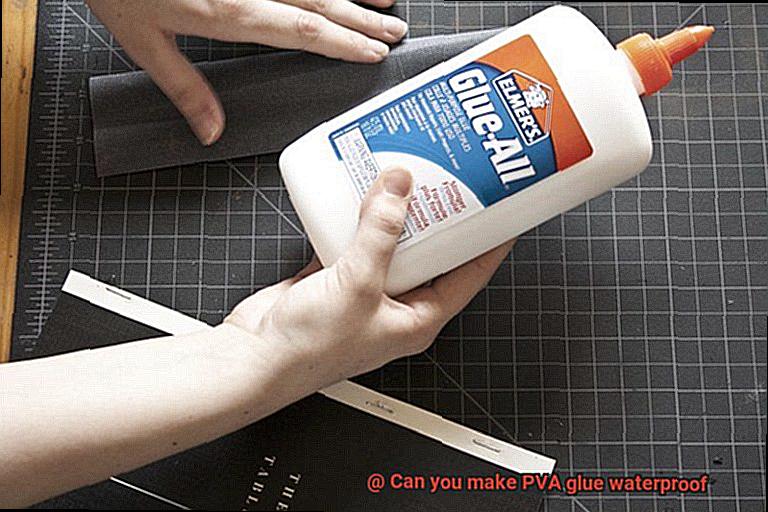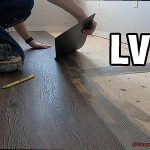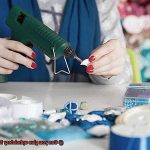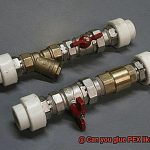Are you tired of your PVA glue not holding up in wet conditions? Look no further, because we have the answer to your problem. PVA glue is a versatile adhesive that can be used for various projects such as woodworking, crafting, and school projects. However, it’s not naturally waterproof.
You may be wondering if there’s a way to make PVA glue waterproof. The good news is that it’s possible. In this blog post, we will dive deep into the science behind PVA glue and what makes it waterproof or not. We’ll also explore the different methods you can use to make your PVA glue waterproof.
Whether you’re a professional woodworker or just someone looking for a DIY waterproof project, this post has got you covered. We’ll provide you with all the information you need to know about making your PVA glue waterproof.
So why wait? Join us on this journey as we uncover the truth about PVA glue and its waterproofing capabilities. Don’t miss out on this opportunity to take your projects to the next level.
What is PVA Glue?
Contents
- 1 What is PVA Glue?
- 2 Is PVA Glue Waterproof?
- 3 How to Make PVA Glue Waterproof
- 4 Adding Additives to the Glue
- 5 Using a Waterproof Sealant or Spray
- 6 Pros and Cons of Making PVA Glue Waterproof
- 7 Tips for Working with PVA Glue in Wet or Damp Conditions
- 8 Common Mistakes People Make When Working with PVA Glue and How to Avoid Them
- 9 Conclusion
PVA glue, also known as polyvinyl acetate glue, is a water-based adhesive that can be found in many households and workshops. This versatile adhesive is made by combining water, polyvinyl alcohol, and other additives to create a synthetic polymer that can bond various materials. PVA glue comes in different forms such as white glue, school glue, wood glue, and clear glue.
The versatility of PVA glue is one of the reasons why it’s so popular among DIY enthusiasts. It’s an excellent bonding agent for materials such as wood, paper, cardboard, and fabric. Once it dries, it remains flexible and clear, making it ideal for projects that require a strong and durable bond. Plus, it’s easy to clean up with soap and water while it’s still wet.
Although PVA glue has many benefits, it has one significant drawback: it’s not waterproof. When exposed to water or moisture, its bond strength weakens and can easily come apart. This limitation makes PVA glue unsuitable for outdoor use or projects that will be exposed to moisture.
However, there are ways to make PVA glue more water-resistant. One way is to add certain additives to the glue, such as silicone or latex, to improve its waterproof properties. Another method is to use a waterproof sealant or spray to coat the glued object’s surface after it has dried, creating a barrier against moisture.

It’s important to note that while these methods can make PVA glue more water-resistant, they don’t make it completely waterproof. PVA glue is still vulnerable to prolonged exposure to water or moisture and may eventually break down or lose its adhesive properties over time.
Is PVA Glue Waterproof?
PVA glue, also known as white glue, is a versatile adhesive that is popularly used in various applications such as woodworking, paper crafts, and even in the construction industry. But the burning question remains: Is PVA glue waterproof? Unfortunately, the answer is no.
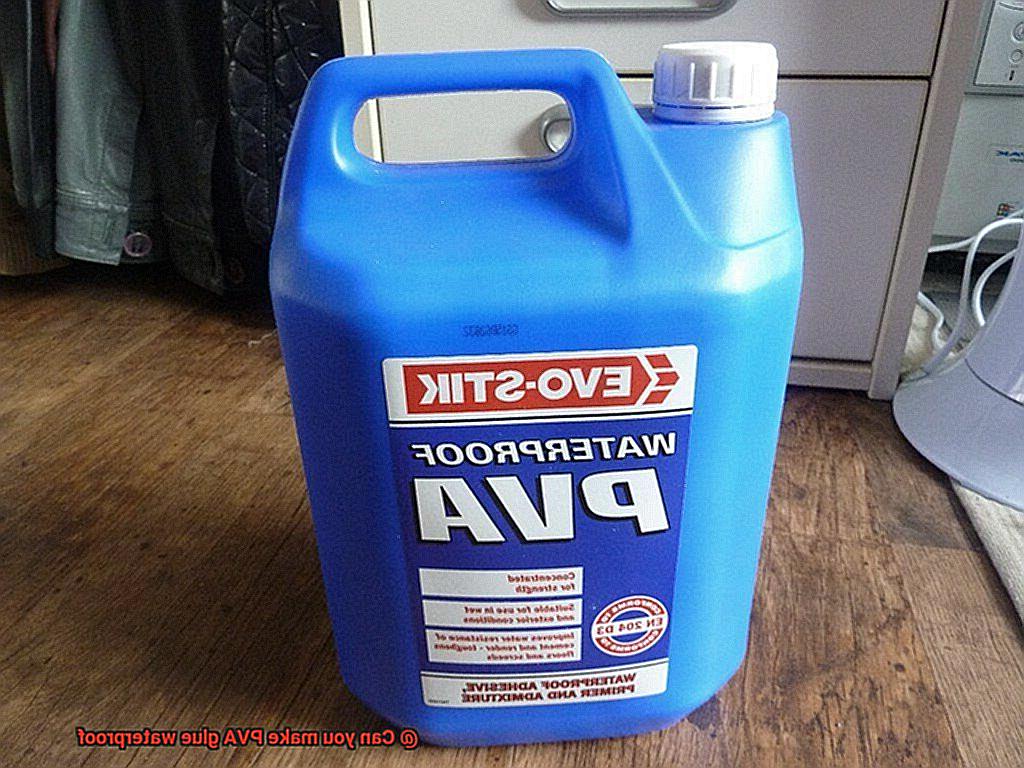
This glue is water-soluble, meaning that it breaks down and loses its adhesive properties when exposed to moisture. Therefore, it’s not suitable for outdoor use or any project where water-resistance is necessary. However, there are ways to make it more water-resistant.
One way to increase the water resistance of PVA glue is by adding certain additives to the glue mixture. Vinyl acetate is one such additive that can improve the water resistance of PVA glue. It’s essential to keep in mind that this method doesn’t make the glue entirely waterproof but can withstand some exposure to moisture.
Another way to improve the water resistance of PVA glue is by using a waterproofing sealer on top of the glued surface. This approach entails applying a layer of sealant over the glued surface to prevent moisture from penetrating the glue.
It’s crucial to note that even with these methods, PVA glue will never be entirely waterproof. It may break down when exposed to prolonged moisture exposure or if submerged in water for an extended period. However, these techniques can increase its durability for a short time.
How to Make PVA Glue Waterproof
PVA glue is a versatile adhesive that is widely used in various DIY projects. However, its biggest limitation is that it’s not naturally waterproof. When exposed to water or moisture, PVA glue can lose its adhesive properties and become weak. This can be a major issue for projects that will be exposed to water or damp conditions.
But don’t worry. There are several methods available to make PVA glue more water-resistant. Here are 5 sub-sections to help you create a strong and durable waterproof seal with PVA glue.
Mix PVA Glue with Water and Dish Soap
One of the simplest ways to make PVA glue waterproof is to mix it with equal parts of water and dish soap. This mixture creates a waterproof seal that works well for sealing wood, paper, fabrics, and more. To create the mixture, simply mix the ingredients together in a bowl and apply it to your project with a paintbrush or roller.
Add Silicone Caulk or Acrylic Paint
Another effective method is to mix PVA glue with silicone caulk or acrylic paint. This mixture creates a waterproof seal that is ideal for outdoor projects such as sealing concrete or brick. Be sure to mix the ingredients thoroughly before applying the mixture to your project.
Apply Multiple Coats
When using PVA glue for waterproofing, it’s essential to apply multiple coats. Each layer should be allowed to dry completely before adding another layer. By applying multiple coats, you can create a strong and durable seal that can withstand water and other elements.
Use Waterproofing Spray or Sealant
For added protection, you can use a waterproofing spray or sealant on top of your PVA glue project after it has dried. These products are designed to protect surfaces from moisture and create a coating over the glue that repels water and helps to maintain its strength.
Consider Limitations
It’s important to note that while these methods can make PVA glue more water-resistant, they do not make it completely waterproof. PVA glue should not be used in situations where it will be exposed to constant or prolonged water exposure. It’s important to assess the limitations of your project and choose the appropriate adhesive for the job.
Adding Additives to the Glue
There is a solution – adding additives to your PVA glue to make it waterproof. As an expert on this topic, I am here to guide you through the process.
Let’s dive into some commonly used additives that can help enhance the adhesive properties of the glue and provide a waterproof seal. One popular additive is silicone. It acts as a barrier against water, preventing it from penetrating the glue and breaking down its adhesive properties. Acrylic can also improve water-resistance by creating a film on the surface of the glue. And if you’re looking for flexibility and durability, latex is the way to go. For an even stronger waterproof seal, epoxy resin is a great choice.
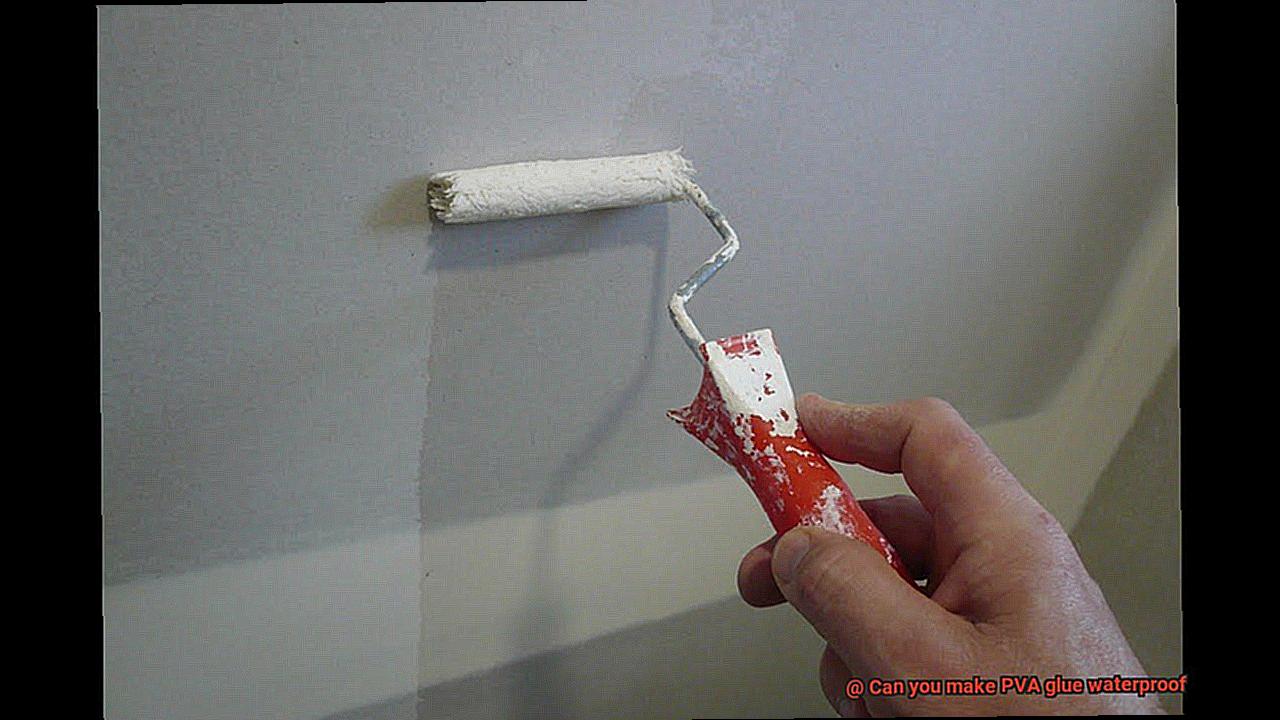
It’s important to note that adding too much or too little of an additive can affect the adhesive properties of the glue. That’s why it’s crucial to carefully follow the manufacturer’s instructions when adding any additives.
To get started, add a small amount of your chosen additive to the PVA glue and mix well. Apply the glue as usual and allow it to dry completely. For extra durability, apply multiple coats of the glue with added additives.
But what if you need even more waterproofing power? Consider using waterproofing spray or sealant in addition to adding additives.
However, it’s essential to understand that while adding additives can enhance the water-resistance of PVA glue, there are still limitations. It may not be suitable for use in completely submerged or constantly wet environments.
Using a Waterproof Sealant or Spray
These products work by creating a protective layer on top of the glue, preventing water from penetrating through it. But before you get started, let’s explore some important sub-topics to ensure a successful outcome.
Firstly, it’s crucial to follow the manufacturer’s instructions when using a waterproof sealant or spray on PVA glue. Most require multiple coats to achieve the desired level of water resistance, and applying too little or too much product can affect its effectiveness. Additionally, make sure the PVA glue is completely dry before applying the sealant or spray to avoid any issues.
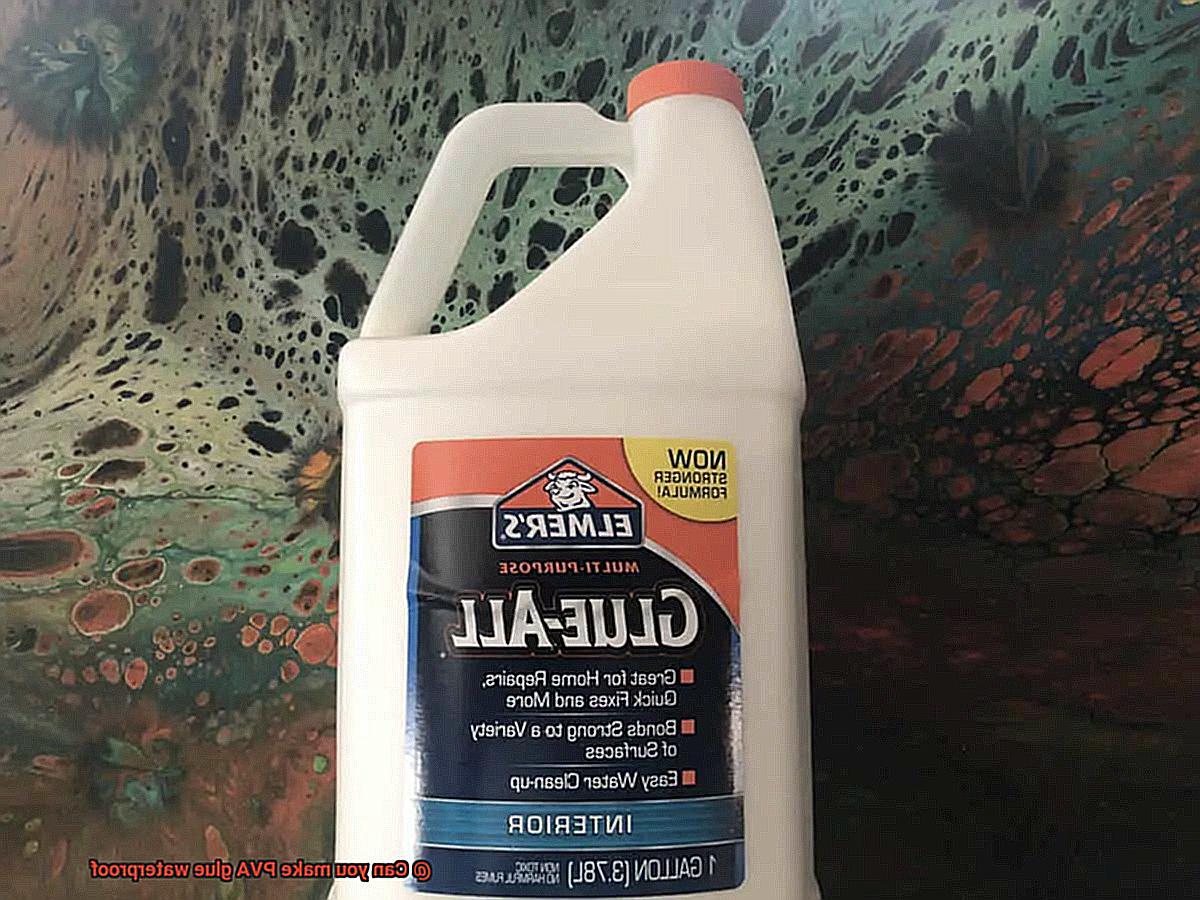
One popular option for making PVA glue waterproof is using a silicone-based sealant. This type of sealant is flexible and durable, making it ideal for a variety of surfaces. However, be aware that it may alter the adhesive properties of the glue, so testing on a small area is highly recommended.
Another option is a waterproof spray designed specifically for PVA glue. Available in aerosol or pump spray versions, these sprays are easy to apply and provide long-lasting protection against water damage on various materials.
It’s important to note that while using a waterproof sealant or spray can be effective, it may alter the properties of the glue. It may become less flexible or have reduced adhesion strength. Therefore, testing on a small area before applying it to the entire surface is essential.
Pros and Cons of Making PVA Glue Waterproof

This versatile adhesive is a popular choice for everything from crafts and woodworking to home repairs and construction projects. However, have you ever considered making your PVA glue waterproof?
Waterproofing PVA glue can provide added protection for your glued item. This is especially important for items that will be exposed to water or other liquids, such as outdoor furniture or kitchen utensils. By adding a layer of water-resistance, your glued items will be better protected against moisture and other liquids, making them ideal for outdoor use or items that will be frequently exposed to water.
In addition to added protection, waterproofing PVA glue can also increase its strength and durability. It can create a better bond between materials, making it a better choice for heavy-duty projects that require a strong, reliable bond. By making your PVA glue waterproof, you can ensure that it will hold up under tough conditions and last for years to come.
However, there are also some potential downsides to consider when it comes to waterproofing PVA glue. One of the issues is that it can alter the texture and consistency of the adhesive, making it more difficult to work with. The addition of waterproofing agents can make the glue too stiff or even cause it to dry too quickly, which can be frustrating when trying to apply the glue precisely or work on intricate projects.
Another potential issue with making PVA glue waterproof is that it can interfere with its ability to bond properly. PVA glue works by penetrating the pores of the materials being bonded and forming a strong bond as it dries. If the glue is made waterproof, it may not be able to penetrate the surface of the materials as effectively, which could lead to weaker bonds.
Lastly, waterproofing agents can sometimes change the color or texture of the glue, which may not be desirable for certain projects.
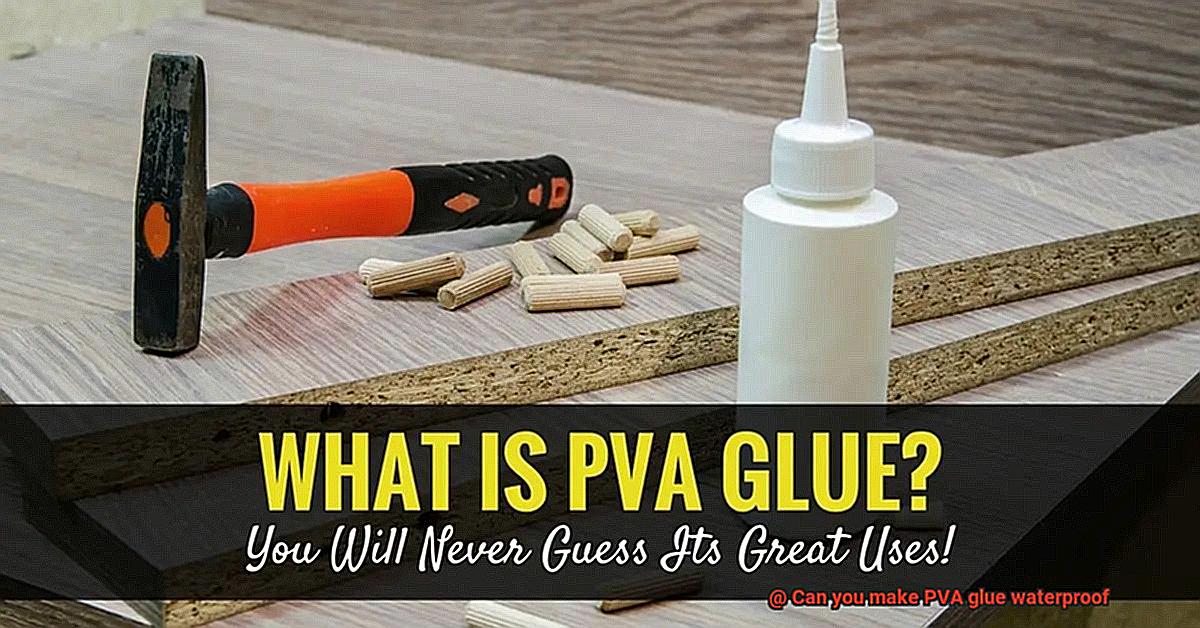
Tips for Working with PVA Glue in Wet or Damp Conditions
Working with PVA glue in wet or damp conditions can be a challenging task, as moisture can interfere with the glue’s ability to adhere properly. However, with the right precautions, you can ensure that your project turns out successfully. Here are some tips to keep in mind:
Use a waterproof PVA glue

When working in wet or damp conditions, it’s important to use a PVA glue that is specifically designed for these environments. Look for a glue that is labeled as “waterproof” or “water-resistant” to ensure the best results.
Prepare the surface properly
Before applying the glue, make sure that the surface is completely dry and free from any moisture. This will help to create a strong bond and prevent any weak spots where water could seep through. If necessary, use a hairdryer or other tool to dry the surface before applying the glue.
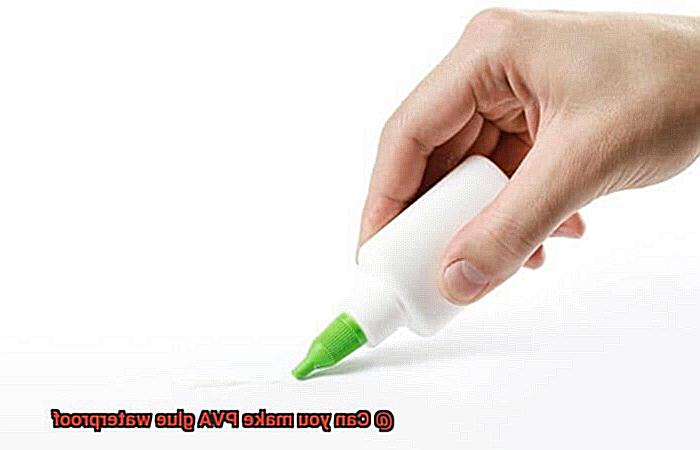
Apply the glue evenly
It’s important to apply PVA glue evenly over the entire surface to create a strong bond and prevent any weak spots. Avoid applying too much glue in one area as this can result in uneven drying and weak spots.
Consider using a sealant
Applying a sealant over the top of the dried glue can provide an extra layer of protection against water damage. This is especially helpful if you are working on a project that will be exposed to water frequently.
Mix with a waterproofing agent
To make your PVA glue more resistant to water, mix it with a waterproofing agent such as silicone sealant or latex paint. This will create a barrier that will prevent water from penetrating the glue and compromising its strength.
It’s important to note that while PVA glue can be made more resistant to water with these precautions, it may not be completely waterproof. If you require a stronger adhesive that can withstand exposure to water, it may be best to opt for a different type of glue such as epoxy or polyurethane glue.
Common Mistakes People Make When Working with PVA Glue and How to Avoid Them
Whether you’re crafting a masterpiece or fixing a broken item, PVA glue is a versatile adhesive that can be used for a variety of purposes. However, common mistakes can lead to a less-than-perfect outcome. In this article, we’ll explore the most frequent errors people make when working with PVA glue and how to avoid them.
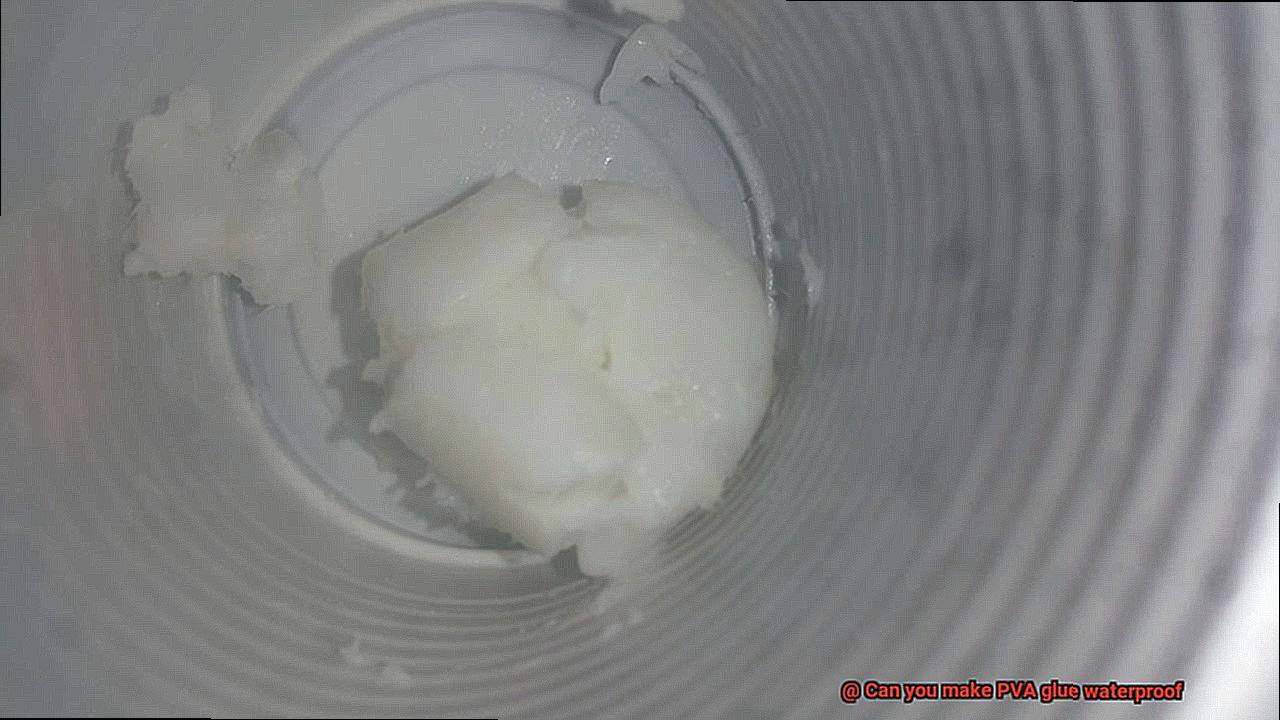
One of the most significant mistakes people make when working with PVA glue is not applying enough glue. PVA glue needs to be applied in a generous amount to create a strong bond. Don’t be stingy when applying it. If you’re unsure about how much glue to use, start with more than what you think you need.
Another mistake people make is not allowing enough time for the glue to dry properly. Patience is crucial when working with PVA glue. It needs time to dry completely before it can create a strong bond. Rushing the process by moving or manipulating glued objects before the glue is fully dry can lead to a weak bond that may break over time.
The third common mistake when working with PVA glue is not preparing the surfaces correctly before applying the glue. For PVA glue to work effectively, surfaces need to be clean and free of any dirt, dust, or debris. Any residue or debris on the surfaces can prevent the glue from adhering correctly, leading to an imperfect bond.
To avoid these mistakes and ensure that your PVA glue projects turn out perfectly, follow these simple steps:
- Apply enough glue generously.
- Allow enough time for the glue to dry completely.
- Prepare surfaces correctly before applying the glue.
y83uXupu5tY” >
Also Read: Is white glue waterproof when dry?
Conclusion
In summary, PVA glue is a jack-of-all-trades adhesive that can be employed in a variety of projects, from woodworking and crafting to school assignments. However, it’s not inherently waterproof. The good news is that there are ways to bolster its water resistance. One technique involves adding certain additives like silicone or latex to the glue, which can enhance its ability to repel moisture. Another method is to apply a waterproof sealant or spray on the surface of the glued object after it has dried, creating a barrier against water.
It’s crucial to note, however, that even with these measures in place, PVA glue isn’t entirely impervious to water damage. Extended exposure to moisture could cause it to deteriorate or lose its adhesive properties over time.
To avoid common mistakes when working with PVA glue, ensure you apply enough of it generously and allow sufficient drying time before using your glued object. Additionally, always prepare surfaces correctly before applying the adhesive.

